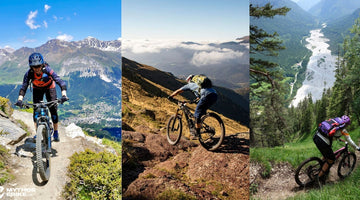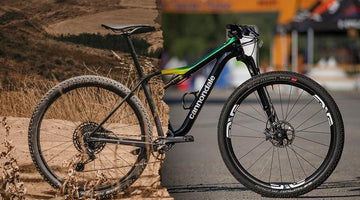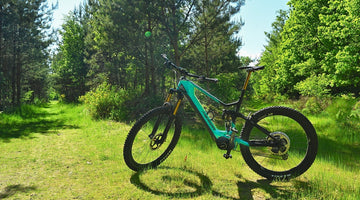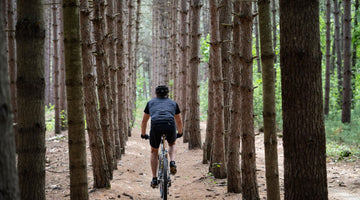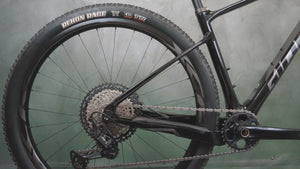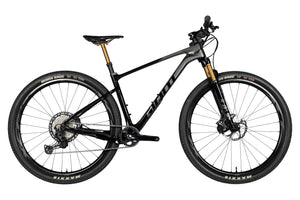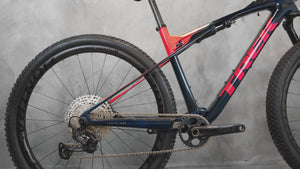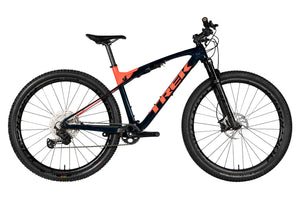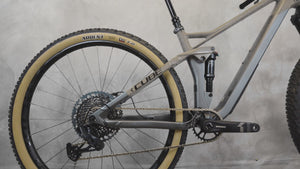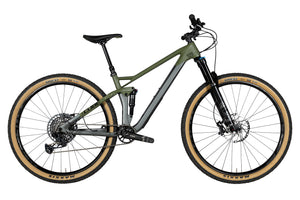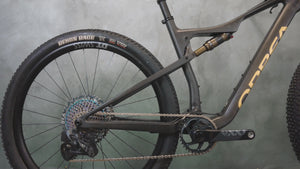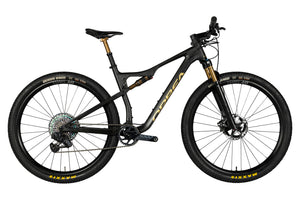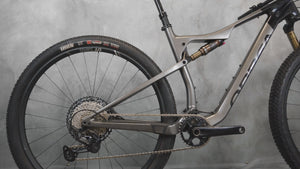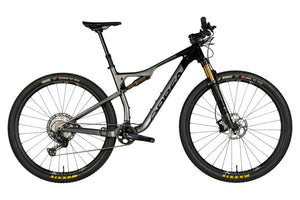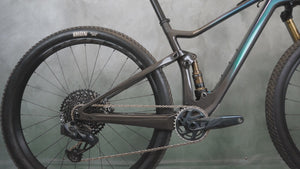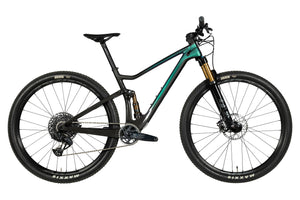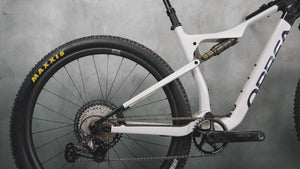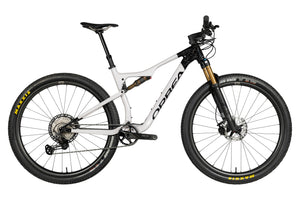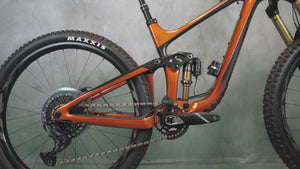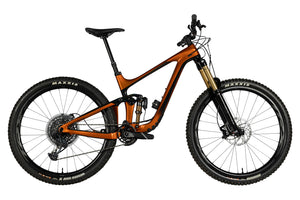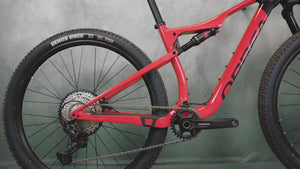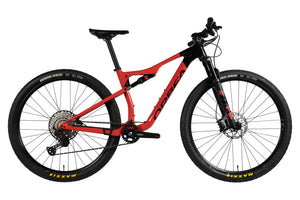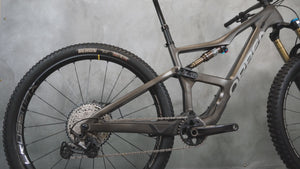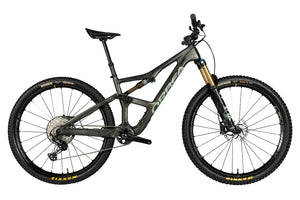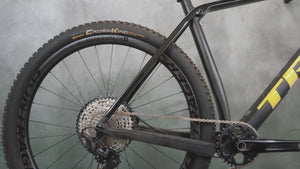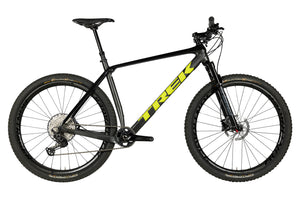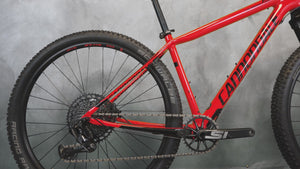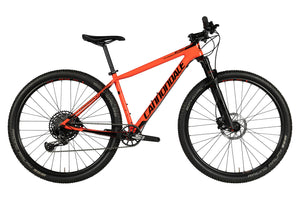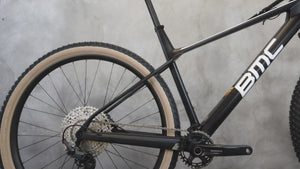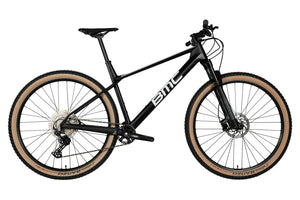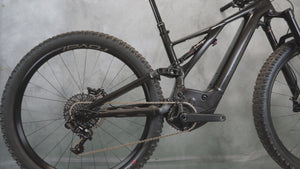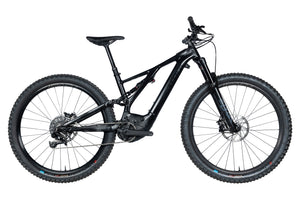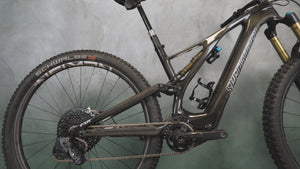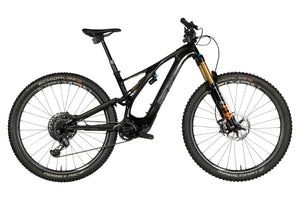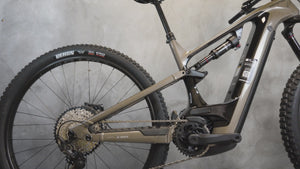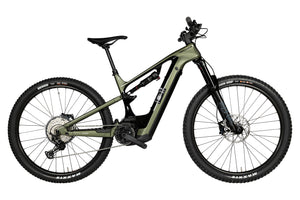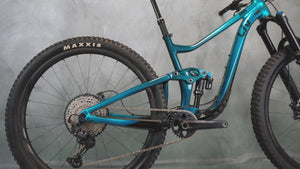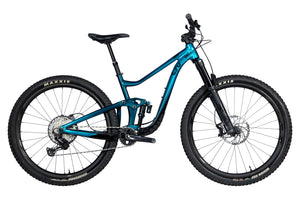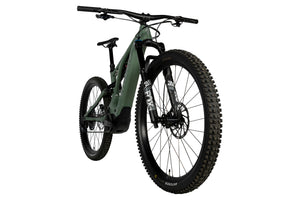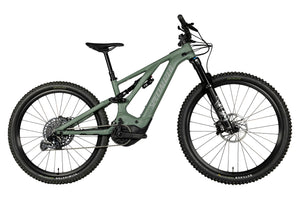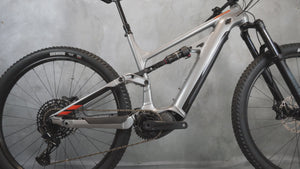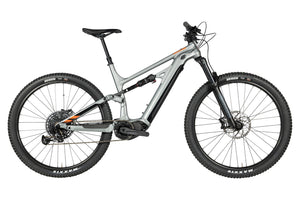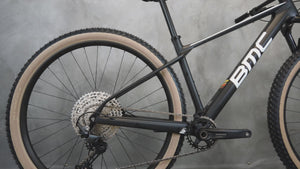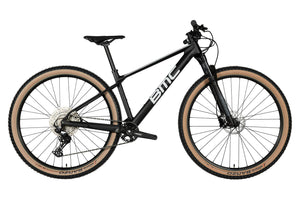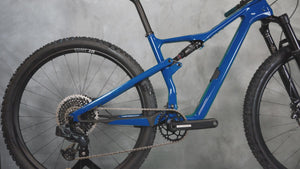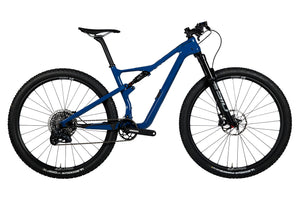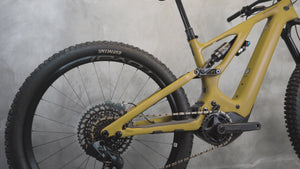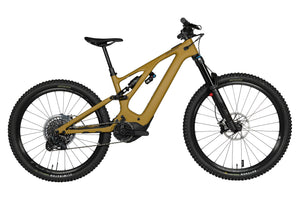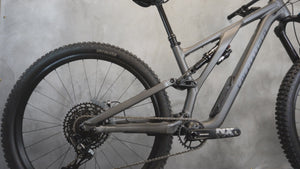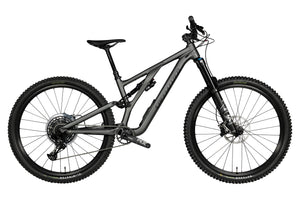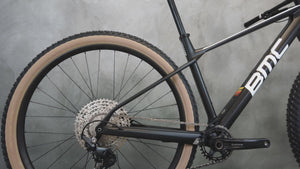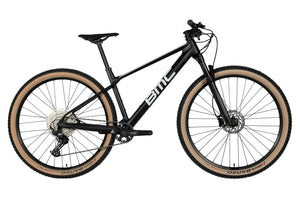MTB Fork Guide for Beginners
In this Article
If there's one thing that makes mountain biking so unique, and that we mountain bikers love to talk about, it's our faithful friend, the fork. Speeding down a mountain wouldn't be nearly as much fun without the added traction, comfort and control offered by suspension forks. That's why all mountain bikers, whether novice or experienced, do the famous "squish" on the fork as soon as they get their hands on a mountain bike - they need to gauge its condition, feel its properties before they send it off.
Mountain bike components, such as the telescopic seatpost and the fork, have come a long way since their inception. The latest generation of suspension forks use lightweight materials and advanced engineering to provide the best possible performance and customization. Unfortunately, this vast amount of models, settings and features can be very confusing for the rider just getting into the sport. Don't panic! This article will help you discover them and start to get an idea of which one will work best for you. Once you've done that, don't hesitate to check out our collection of MOUNTAIN BIKES and target the bikes equipped with the fork in question.
The fork - the real star of the mountain bike.
The mountain bike fork is an essential piece of equipment, as it absorbs the impacts and imperfections of the toughest terrain, improving traction, speed and control. However, this was not always the case. The first MTB models did not have these features, as rigid frames were the norm. It wasn't until 1991 that front suspension was introduced to downhill and cross-country racing with Travis Brown's Manitou. Although it radically changed the performance and feel of racers, the first models were more of a one-size-fits-all design, with 30-50mm of travel. Today, the best mountain bike forks are lighter than ever, infinitely adjustable, and offer six times the travel and unmatched rebound rates. In fact, world championships are won with the right suspension setup, and the evolution of these components improves safety and comfort for riders of all levels.
Most modern mountain bike forks use air springs because they are lighter and easily adjustable. Entry-level forks generally use less expensive shocks that offer fewer adjustments to control compression and rebound. High-end forks use more sophisticated shocks that are more responsive to rough terrain and offer more adjustment options. Shocks are the main reason for the price difference between entry-level and high-end forks.
In many cases, forks from the same brand use the same shock options on different models, but use different frames to fit the practice. As a result, the shock characteristics will be equivalent from one model to another, but the weight and stiffness will vary depending on the diameter of the forks.
To learn more, consult the diagram below to identify the components of an ATV fork.

Types of forks by discipline.
It's long past time for one type of mountain bike to cover all mountain bike disciplines! Today, technology allows for a wide variety of materials, designs and suspensions to maximize each rider's performance when pedaling, climbing or descending the most rugged trails. We can go from a high travel fork for downhill to a low travel fork with automatic lockout for XC, or stay in the middle range for trail or all-mountain riding.
In cross-country as elsewhere, the goal is to get the best performance for the least weight. The same goes for forks. To achieve this goal, cross-country forks offer minimal travel (100-120 mm) and use small diameter forks. These forks often weigh 250-500g less than their trail counterparts. This type of fork is so light and has such a low travel that many people use it as a compare it to gravel. Many XC forks are also equipped with remote levers that allow you to quickly lock the fork in on climbs and smooth sections without letting go of the handlebars. These forks have a travel of 100 to 120 mm and a diameter of 30 to 32 mm.
This fork is for you if: your goal is to pedal and provide maximum effort.
The best in their class:
The Lefty is a mythical XC race fork made by Cannondale. It's inverted and one-sided, with the spring and shock housed in a single leg; its design supposedly makes it stiffer than its competitors, without a significant weight increase. Lefty's are only found on a few Cannondale models, but they have a cult following.

Find it on this Cannondale F-Si Hi-Mod.
The RockShox SID Ultimate is at the top of the line of suspension forks for cross-country riding. SL indicates that this is the lightest fork in the SID line, designed to cover miles and climb hills with ease.
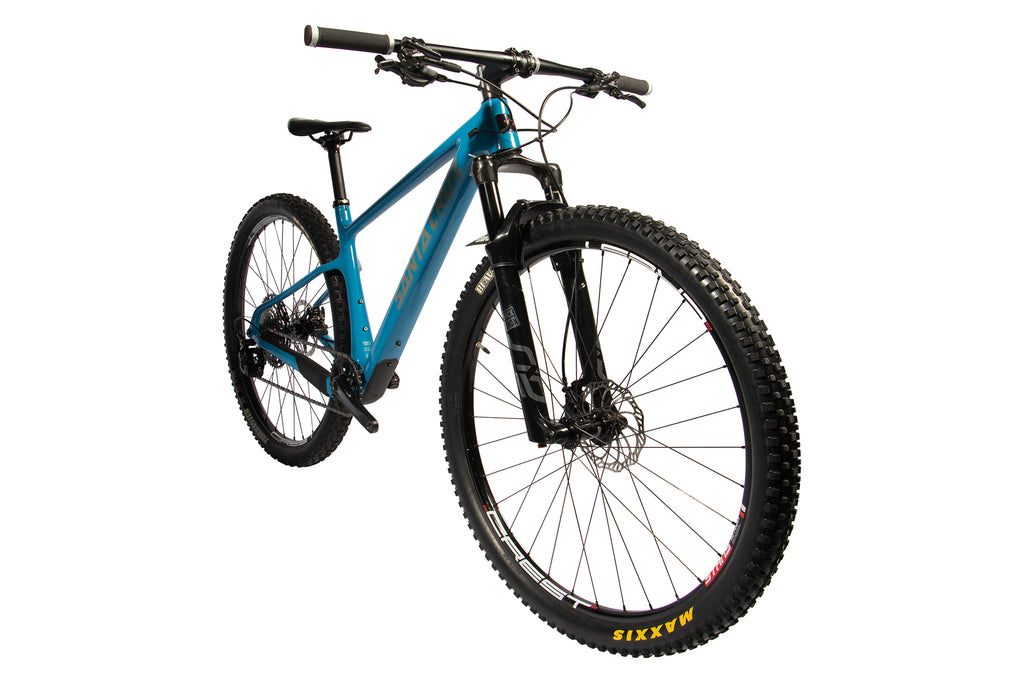
Find it on this Santa Cruz Highball CC.
As the sport evolves, so does the desire to break boundaries and go beyond the usual trails and terrain. Pedaling long distances with the ability to ride highly technical terrain is the new trend in XC, sometimes called downcountry. To accommodate this, lightweight versions of trail forks have been introduced. These forks have a travel of 120 to 140 mm and a diameter of 32 to 34 mm.
This fork is for you if: you are looking for a more muscular XC race bike or a light trail bike version with short travel for technical racing and all-around riding.
Best in class:
The Fox 34 Step-Cast fork is lighter than the standard Fox 34, bridging the gap between pure cross-country forks and heavier trail forks.
The trail fork is the most versatile of all; it sits between the light cross-country forks and the heavier enduro forks. The average travel is 150 mm and the diameter is about 34 mm. These forks are found on low and medium travel trail bikes, designed for both climbing and descending. The idea behind these forks is to give the rider great downhill capability without sacrificing the climbing ability of a shorter travel fork. These forks have a travel of 20 to 150 mm and a diameter of 34 mm.
This fork is for you if: you want to spend long days in the saddle, be able to pedal uphill on the toughest trails and then go downhill at full speed.
The best in their class:
Designed for trail riders, the Fox 34 Factory now features the GRIP2 shock and EVOL air spring in an ultra-lightweight frame. As the name implies, it features 34mm forks with a gold Kashima coating, which is supposed to improve the durability of the shocks. Despite its low weight, the Fox 34 is stiff, offering the flexibility and damping quality expected from Fox.

Check it out on this great Lapierre Zesty AM 8.0 Ultimate.
The RockShox Pike fork is the ultimate performance trail fork and comes with the RockShox RC2 shock.
You can adjust the compression of the fork with volume spacers without compromising weight.
All-mountain/enduro forks are designed to absorb big impacts and improve traction and comfort on rough terrain. With more travel (up to 180mm) and a larger diameter, they offer increased stability and stiffness to tackle the toughest obstacles. The difference with a trail fork is mainly in the weight, as these forks weigh about 2,000g. The high-end versions use shocks with a wide range of settings, allowing riders to adjust their forks. Enduro: 150-180 mm travel, 35-38 mm diameter.
This fork is for you if: you want to participate in enduro races or you regularly ride on steep and muddy terrain.
The best in their class:
The Fox 36 fork gets its name from its 36mm forks. It's extremely popular with enduro riders and trail riders who want to beef up their medium-travel trail bikes. In addition, the 2021 models feature air bleed valves to relieve pressure built up in the air spring to keep the fork smooth, and a floating axle to eliminate any alignment issues that could lead to binding when the fork is compressed.

Find it on this beautiful Yeti SB 130 Turq.
The Swedish brand offers an exceptional product here. While having extra tubes may seem complicated, in practice the Ӧhlins fork is very easy to adjust and offers incredible performance. Stiffer and better performing than the original RXF, the RXF 36 M.2 is a great alternative to the big names from Fox and RockShox. With a highly damped setup, this fork will suit the heaviest or most aggressive rider, and will work better the faster you go.
Let's bring out the heavy artillery! Enduro/downhill forks are the kind of components you look for when you're not playing around anymore and it's time to get serious. These forks take enduro bikes to the extreme in terms of downhill performance. They're still built with a single crown (full downhill forks use a double crown for maximum stiffness), but stiffness isn't an issue thanks to the massive uprights. Naturally, this makes these models heavier than all-mountain/enduro forks, but also more responsive on extreme terrain. These forks have a travel of 180-200 mm and a diameter of 40 mm.
This fork is for you if: you don't doubt and want to ride double black diamond trails on long bike park days.
Best in class:
The RockShox Boxxer fork is one of the best performing suspension forks for downhill riding, and has been for years. The big difference between the Boxxer and its competitors has always been the 35mm fork tube, which is significantly thinner than its 40mm rivals. While this adds a bit of torsion, the Boxxer is never unsettled - on the contrary, it offers unwavering smoothness and confidence.
Fox's Float 40 Factory fork has had far too much success in recent years in the Downhill Mountain Bike World Cup to be featured. Built around 40mm forks and featuring a whopping 203mm of travel, the fork is naturally very stiff and responsive. Its standard Kashima coating ensures that it will be smooth all the way.
And Kashima, who is it or what?
You may have noticed a nice golden color on the fork of some MTBs: it is the Kashima coating.
Forks in general are coated with a hard, porous anodic film with low to moderate wear resistance, which means there is a higher risk of abrasion and wear caused by a lack of lubrication in areas of higher pressure, vibration and friction. The Kashima coating is a way to avoid this by providing superior lubricating properties and greater strength to avoid the problems associated with traditional hard anodic film. It is actually a chemical component that improves lubrication and corrosion resistance, resulting in better fork, shock absorber and sway bar performance, longer life and and easier maintenance.And, of course, it makes them look better and shinier. Not bad, is it?
Conclusion
Now that you have the basics to understand everything about MTB forks and their uses, the decision to choose the right one for you will of course be made by trying them. You know the differences between the main models, but it's the feel that matters to you now. It's like when you compare a bike in carbon or aluminum bikeit's all about the feel.
Buying a new fork is like choosing between a full-suspension mountain bike and a semi-rigid mountain bike: there are some specific points to consider. First, the travel is important because a fork that is too long or too short will alter the geometry of the bike. Second, the type of activity you plan to do is also important. For example, there are a number of forks around 160mm, but some are more trail oriented, while others are enduro oriented. Choosing a stronger, heavier enduro fork over a trail fork will make a noticeable difference in how your bike handles.
The suspension fork of a modern mountain bike is a complex piece of equipment that naturally has many moving parts. It's worth familiarizing yourself with the anatomy of the fork and the various terms associated with it before making your choice. Now go ahead, alone or with your best friendand ride!


